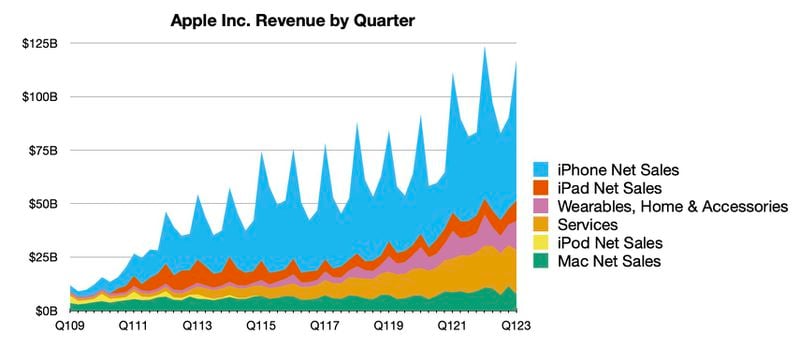Very likely. The vast majority of financial transactions today are still processed on mainframes.
It counter intuitive, unless you understand how levels of integration work.
There is an emotional component to our thinking. ;-)
When Apple released the M1 (5nm) in November 2020, they were a few process nodes ahead (10nm & 7nm) of Intel (14nm from 2014-2020). The shrinking in area is quadratic.
What we are witnessing is the same thing that happened when the microprocessor took over the mainframe/supercomputers.
The perception was the system that took a whole room and had lots of blinking lights had to be the more powerful. However, what was happening was that the microprocessor guys were integrating the same functionality that took lots of separate boards on a mainframe down to a few chips.
There were some very specific use cases where the mainframe had the edge, but for the 99% of the rest of the applications, we were ending up with system on our desktops that were faster than a computer who took a whole room. Heck, you can now buy a GPU for a $1k that is more powerful than the fastest supercomputer from 2000, which cost millions of dollars, took an entire floor in a datacenter, and used almost 1 megawatt.
The microprocessor vendors also had access to larger economies of scale, which meant they could spend more money in development of their designs/tech so they were able to overlap the old large system vendors who had slower development cycles and smaller revenues.
The same thing is now happening with SoCs. They are having larger levels of integration, so they can fit a whole PC into a single chip. Which means that things run faster, with less power, and less cost. And since they are leveraging the mobile/embedded markets that are larger and are growing faster than the traditional PC/datacenter stuff.
The SoC vendors are the ones with access to the largersteconomies of scale today. So they are developing things faster.
How large? SoC vendors who make up
100% of all smartphones shipped
Android (all price points)
- 2021: 1.124 billion units
- 2022: 0.979 billion units
Vs
iPhone ($429-1599)
- 2021: 235.8 million units
- 2022: 226.4 million units
As compared to all x86 vs Apple Silicon
Personal Computers shipped
Windows (all price points)
- 2021: 322.2 million units
- 2022: 263.7 million units
Vs
Mac ($999 & up for laptops + $599 & up for desktops)
- 2021: 27.9 million units
- 2022: 28.6 million units
I'll add
SoC vendors who make up 100% of all tablets Windows?
Android/Windows (all price points)
- 2021: 110.5 million units
- 2022: 101 million units
vs
iPad ($449-2399)
- 2021: 57.8 million units
- 2022: 61.8 million units
Below are the total units shipped of Macs, iPads & iPhones
- 2021: 321.5 million units
- 2022: 316.8 million units
vs
Windows (all price points)
- 2021: 322.2 million units
- 2022: 263.7 million units
Apple devices out shipped all Intel/AMD PCs combined. Apple only caters to the
top ~20% of any market they enter. Apple leveraged iPhone & iPad SoC R&D to create >90% of Apple Silicon. <10% R&D for whatever Mac-specific requirements are paid for Mac revenue.
Which is why you end up with a mobile chip trading blows with a whole PC.
So you will see mobile SoCs getting more and more powerful at a faster rate than desktop microprocessors. And
once they pass the inflection point, the desktop processor starts to actually lag in performance and can't catch up.
This has happened several times Mainframes -> Minicomputers -> Microcomputers -> SoCs... and it's usually correlated with jumps in levels of integration.
BTW, you still have old guys who come from the mainframe era still in denial of how a PC could possibly be faster ;-)
Do not be surprised that workstation desktop users who insist on PCIe expansion slots will eventually be like them.
Hope this makes sense.



